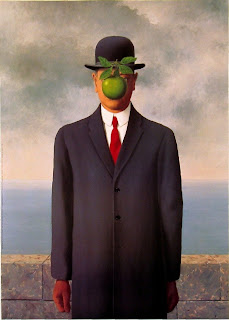In today's world of advertising we subject to a great deal of this kind of imagery but a lot of this to me seems very much forced so doesn't necessarily have the force of impact that say a photo taken in a spur of the moment might have, this isn't to say that planned images don't work its just that I feel that the more natural the scene feels that better the effect. Below are a few examples of some of the best images I've found that contain the use of Juxtaposition.
Taken from creative4mmu.wordpress.com

Taken from armandcreativestudies.blogspot.co.uk
Taken from nocturne89.wordpress.com
Taken from trekearth.com
One thing to be aware of is that this isn't a modern photographic approach, in fact as with many com positional techniques it has its roots in the world of painting and in this case the work of the Surrealist movement where you can find many examples of it in use for example these images below.

Taken from artfullyawear.com
Taken from dludvigson.edublogs.org
Taken from edc13.education.ed.ac.uk
So how is the use a juxtaposition going to help my work? In the sort term I can use it to strengthen the message of conservation within my photography but I think it'll become more useful when it comes down to setting out how I want my work to appear and I think this is what my tutors getting at by recommending going back and looking at this idea. What I mean is that depending on which images I put side by side together say in a book I can very easily strengthen or weaken the end product if I don't really think about what I'm saying with these images. It'll also be something I'll need to consider when working on the National Park section because the current approach I'm taking with the camera obscure effect can really work well with the right combination of imagery used to encourage people out of there homes and into the countryside.
No comments:
Post a Comment